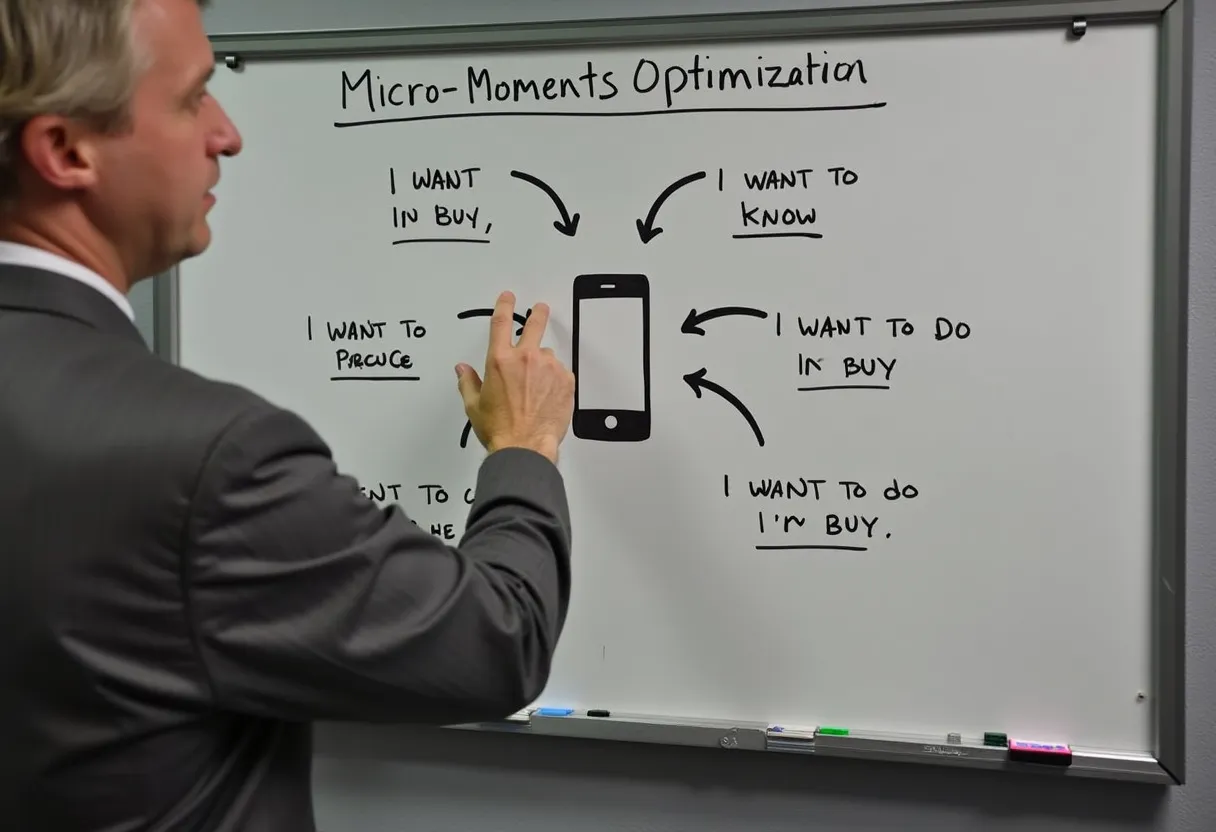Micro-Moments Optimization
Micro-Moments Optimization refers to the strategy of capturing and addressing the brief, intent-driven instances when consumers use their devices to act on a need – to know, go, do, or buy. These moments are critical because they represent high-intent opportunities where consumers are close to making decisions, and meeting these needs with relevant content can significantly enhance user engagement and conversion rates.
How It Works
Micro-Moments are categorized into four main types:
I-Want-To-Know Moments
Users are researching and seeking information but are not yet in purchase mode. They need useful content such as blog posts, videos, or guides to help them understand a product or service.
I-Want-To-Go Moments
Users are looking for local businesses or services. They need location-specific information like maps, addresses, and directions to guide them to a physical location.
I-Want-To-Do Moments
Users are seeking help to complete a task or learn something new. They benefit from content such as tutorials, how-to guides, and instructional videos.
I-Want-To-Buy Moments
Users are ready to make a purchase and need information to finalize their decision. They are looking for deals, coupons, or quick ways to buy online.
To optimize for micro-moments, marketers must be present at the right time, provide the right information, and ensure a seamless experience. This involves using data and analytics to anticipate and predict these moments, tailoring content to match each type of micro-moment, and optimizing digital platforms for mobile use.
Why It Matters
Micro-Moments Optimization is crucial for several reasons:
User Experience
Meeting the immediate needs of users during these high-intent moments enhances their overall experience, increasing the likelihood of engagement and conversion.
Competitive Edge
Brands that effectively capture micro-moments gain a significant advantage over competitors by providing relevant and timely content.
SEO Performance
Aligning content with micro-moments helps in ranking better for target keywords, as search engines favor content that matches user intent.
Conversion Rates
Optimizing for micro-moments can lead to higher conversion rates, as users are more likely to take action when their immediate needs are met.
Best Practices
Leverage Data and Analytics
Use tools like Google Analytics, social listening platforms, and CRM systems to analyze consumer behavior, search trends, and engagement data. This helps in identifying and anticipating micro-moments.
Content Tailoring
Develop a diverse range of content (blog posts, videos, infographics, interactive quizzes) that caters to each type of micro-moment. Optimize this content for search with relevant keywords, meta descriptions, and internal links.
Mobile Optimization
Ensure digital platforms are fully optimized for mobile use. Use tools like Google AMP to speed up mobile load times, and make sure the website is responsive and performs well across all devices.
Speed and Efficiency
Prioritize speed and efficiency. Use chatbots or AI-driven tools to provide instant answers to common questions, and ensure that the website loads quickly to avoid driving users away.
Align with Search Intent
Review keyword lists and determine the micro-moment category for each keyword. Craft content aimed at educating customers and align it with the intent behind the keyword. For example, use Local Service Ads for “I-want-to-go” moments and favor content like featured snippets for “I-want-to-do” moments.
Cross-Channel Marketing
Employ cross-channel marketing to build bonds with customers across various devices and touch points. This ensures that the brand is present and relevant at every stage of the customer journey.
Additionally, terms like Accelerated Mobile Pages (AMP), Behavioral Metrics, Customer Journey, Customer Journey Optimization, Mobile-First Indexing, Page Speed, Page Speed Optimization, User Experience (UX), Voice Search, and Voice Search Optimization are vital components to consider for optimizing micro-moments effectively. These elements help in providing a quick, seamless, and relevant user experience, aligning perfectly with the high-intent nature of micro-moments.
Conclusion
By following these best practices, marketers can effectively capture and optimize for micro-moments, leading to improved user engagement, higher conversion rates, and enhanced SEO performance. Ensuring a seamless, relevant, and quick response to user needs during these moments can significantly influence the decision-making process and provide a competitive edge in an increasingly mobile-focused world.



